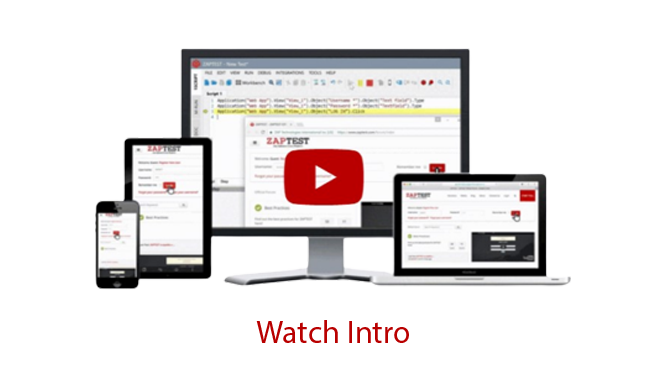Dynamic testing in software testing is a valuable software testing technique that involves executing application source code and observing how it behaves during runtime. While many testing teams use static testing to catch issues early, dynamic testing is used to validate functionality, assess performance, and catch issues that static testing will not uncover.
In this article, we’ll explore dynamic software testing and explain what it is and why you need it. Then, we’ll look at several different types, processes, and approaches before reviewing some of the best dynamic testing tools on the market today.
What is dynamic testing in software testing?

Dynamic testing is a software testing approach that validates an application by executing the source code. Or, to put it in terms that everyone will understand, it’s a type of software testing that works by running the application and observing both its functions and behaviors.
This process starkly contrasts with static testing, which instead examines the source code and associated documents before execution to uncover defects, anomalies, and whether the work adheres to best coding practices.
Dynamic testing is referred to as dynamic because it is active and changing. It measures how the inputs affect outputs in real time within the system under test.
The key goals here are as follows:
- To test the software’s overall performance, functionality, and stability across a wide variety of conditions that simulate real-world use cases
- To unearth any defects, bugs, or performance issues that can not be discovered by static testing alone
- Ensure that the software meets user expectations and that its compatible with different operating systems, browser, and devices.
Advantages of dynamic testing
Dynamic testing complements a static testing approach because it goes beyond theory, best practices, and coding standards and verifies how the software functions during runtime. Let’s explore why this testing approach is so important.
#1. Tests for runtime errors and unwanted behaviors
There are certain types of unwanted behaviors that only reveal themselves in a live environment. Dynamic testing is required to expose defects like:
- Runtime errors
- Performance bottlenecks
- Memory leaks
- Security vulnerabilities
#2. Provides comprehensive testing
Dynamic testing allows testers to verify many different aspects of their application, from core functionality to the user interface to overall performance under a diverse set of conditions. Testing different elements of the software ensures that the software is put through its paces and is ready for release into the wild.
#3. Real-world testing
Static testing verifies the software “on paper,” while dynamic testing shows you how your application will work in the real world. With this more pragmatic approach, you can see how different environments, loads, and use scenarios affect performance. What’s more, thanks to compatibility testing, you can see how your application runs with different operating systems, browsers, configurations, and devices.
#3. Validate user experience and functionality
Dynamic testing helps you understand how your product meets user expectations and specifications. It focuses on the effect that inputs, user interactions, and data combinations have on the application, giving testers confidence that the user experience is stable, seamless, and intuitive.
#4. Finds complex bugs
Some bugs and defects only become apparent when different parts of an application are tested together. Indeed, for complex applications, dynamic testing is the only way to uncover defects that result from integration of different modules and components.
#5. Enhanced reliability
Solid dynamic testing helps teams uncover and resolve bugs and defects earlier in the software development lifecycle. When paired with static testing, this approach lowers the likelihood of resource intensive rework, or, worse still, post-release problems. What’s more, dynamic testing encourages teams to produce code that is well-structured and easy to maintain, reducing potential issues propagating throughout the software during development.
#6. Early feedback
Another huge plus of dynamic testing is that it promotes a culture of constant feedback and improvement. Unearthing issues early in the process allows developers to incorporate real-world feedback, leading to a more effective development process.
#7. Automation-friendly
Software test automation tools have revolutionized the world of software testing, facilitating quicker, more cost-effective, reliable, and comprehensive testing. Dynamic testing is versatile and can be adapted to automated testing tools, helping teams reduce the costs that are traditionally associated with this kind of testing.
Disadvantages of dynamic testing
While dynamic testing has many compelling advantages, there are some areas of weakness that testing teams need to understand.
#1. Time-intensive
Dynamic testing requires testers to execute all or most of the source code. This process takes a lot of time. Moreover, testers need to write test cases, set up testing environments, and analyze the results and reports from tests. Again, this means more time that needs to be invested into the testing process.
#2. Resource-intensive
While static testing does require collaboration between teams, dynamic testing needs more resources. These resources include access to skilled testers with extensive knowledge of software testing techniques, methodologies, and best practices, alongside hardware, software, and quality test automation tools.
#3. Coverage limitations
While dynamic testing does allow for comprehensive software testing, testers must be aware that it can’t verify every outcome, scenario, or combination of inputs. Indeed, testers must be conscious of edge cases or unforeseen scenarios, and adjust and adapt their methodologies to incorporate some of these situations.
#4. Lifecycle issues
Unlike static testing, dynamic testing tends to occur later in the software development life cycle. As such, it means that defects are discovered later in the process. The downside here is that bugs and errors unearthed by dynamic testing can be more expensive and complex to fix because they have propagated throughout the code.
#5. Debugging complexities
While dynamic testing helps identify bugs and defects by running the application, in certain complex software builds, identifying the source of these errors is more complicated. Remediation of these problems may require additional or unforecasted resources, which can be a problem for projects running on tight deadlines or budgets.
Static and dynamic software testing
Static and dynamic testing are two related types of software testing. However, they describe distinct approaches to testing software. Understanding the differences is important for testing teams.
Static testing is proactive and verifies things like application design, related documentation, and source code through a process of thorough reviews. Dynamic testing, on the other hand, tests the functionality of the code by executing the software.
You can think of static testing as a more theoretical approach to testing. It involves aligning product requirements and use cases and reviewing code and other documents to catch early problems, including issues with software requirements, defects, test cases, and so on. It’s like looking through a blueprint to find issues that may occur down the line.
On the other hand, dynamic testing verifies problems with the software by running the application. No matter how thorough your static testing is, some issues will go unnoticed. Dynamic testing verifies the functionality of the software to see if it works as it was intended.
Both static and dynamic software testing are concerned with delivering quality software that aligns with stakeholder expectations. However, static testing is proactive, while dynamic testing is reactive.
As for whether you should choose between static and dynamic testing, this answer is simple. These techniques are highly complementary. Static testing should be implemented early in the software development lifecycle to find and resolve issues before you compile the code. The result is saving time and effort.
Challenges associated with dynamic testing
Like any kind of software testing out there, there are a few challenges of implementing an effective dynamic testing approach. Here are some potential roadblocks you may encounter.
#1. Accessing skills and expertise
While dynamic testing requires employees with experience in QA methodologies, it also requires more specialist skills, such as knowledge of complex web application architectures, advanced scripting techniques, and awareness of test automation tools.
For teams that want to shift into a dynamic testing culture, acquiring personnel with these skills requires either time-consuming recruitment strategies or training.
#2. Technical investment
Implementing tools capable of dynamic testing requires an investment in both software and the personnel required to implement and maintain it. Unwise investments can lead to escalating development costs.
#3. Test case maintenance
Dynamic testing requires that testers continuously maintain and update test cases to deal with ever-changing and ever-evolving conditions. Test cases can easily become outdated, and not fit for purpose, while unpredictable interactions between complex elements, inputs, and systems can quickly diminish the utility of test cases.
#4. Data management
Different types of dynamic testing methodologies
Dynamic testing can be split into two broad categories: black-box testing and white-box testing.
1. White box testing
White box testing is a testing technique that is concerned with the internal structure and design of a system. White box testers come to the tests with a priori knowledge of the system architecture and design and verify the program based on this knowledge.
2. Black box testing
Black box testing, on the other hand, is a testing technique where the tester does have details about the internal workings of the software build. Instead, testers are solely concerned with the functionality of the software. As such, they verify the application by sending inputs and observing outputs or how the software behaves. In general, this type of testing is carried out by QA professionals.
3. Grey box testing
Grey box testing is a testing method that sits somewhere between the black and white testing methods listed above. While black box testing implies the tester has no knowledge of the software, and white box testing suggests the tester has full knowledge of the software, gray box testing dictates the tester has partial knowledge. While they may not have access to the source code itself, the tester may have access to design documents, databases, APIs, and so on. In particular, this testing is useful for security, database, and integration testing.
Different dynamic testing techniques
Black box testing is an important part of a dynamic testing approach. This type of testing can be split into two kinds: functional testing and non-functional testing.
Functional testing
Functional testing is concerned with the functionality of the application under test (AUT). Each module that is under test must be fed with an input, with the output tested against an expected outcome. There are different levels of functional testing. Here are the four primary techniques that you need to be aware of.
1. Unit testing
Unit testing looks at the basic building blocks of a piece of software (modules or components) and tests them on an individual basis. Typically, this kind of testing is carried out by developers as the code is written.
2. Integration testing
Integration testing looks at the individual components or units of software tested above, and sees how they work when integrated together. Some of the things under test are data flow between each component.
3. System testing
Following on this progression, system testing validates the software as a whole when each part is integrated together. This process involves a more holistic look at the software to ensure that the application meets both user and business requirements and overall specification.
4. User acceptance testing
Seen as the final step in the testing lifecycle, user acceptance testing is carried out by the end users before the application is released into the wild. Some of the things under test here are confirming the software meets stakeholder expectations and solves the problems or pain points that the software was built to resolve.
Non-functional testing
While functional testing verifies if the software’s core features and functions operate as intended, non-functional testing explores important elements, such as performance, usability, security, reliability, scalability, etc.
Here are some of the elements involved in non-functional testing.
1. Performance testing
Performance testing uses different kinds of tests to see how the application handles the stresses and strains it will face on release. Some of the most common types of performance testing include stress testing, speed testing, and load testing.
2. Usability testing
Usability testing is a variety of system testing that verifies the usability of the software. This testing is very user focused and is a great source of feedback about the UI/UX strength of your software.
3. Compatibility testing
Compatibility testing ensures software functions correctly and consistently across different environments, platforms, browsers, devices, hardware, and software configurations.
4. Security testing
Security testing uses a mix of black box testing techniques to find runtime vulnerabilities by simulating attacks or using techniques like fuzz testing.
Best dynamic testing tools
As you can see, dynamic testing involves a mix of different testing techniques and methods. While there are many tools that excel at one job, they may fall short in other areas.
Next, we’ll share three software testing tools that can help you with dynamic testing.
#3. Selenium
Selenium is an open-source, cross-platform automation framework. It integrates with the cloud, has WebDriver integration, and supports a wide range of languages, platforms, and testing frameworks. It’s a great tool, despite its steep learning curve.
#2. TestSigma
TestSigma is a user-friendly tool with some great features for dynamic testing. It’s easy to integrate with other testing tools, and capable of parallel and data-driven testing. What’s more, test creation is simple and it comes with AI-powered self-healing tools. API testing and report generation are less powerful than other tools like ZAPTEST, but overall it’s a quality option.
#1. ZAPTEST
ZAPTEST is a software test automation tool that comes packed with a powerful suite of tools that makes it ideal for dynamic testing. While some users may primarily know ZAPTEST for its RPA capabilities, it’s a market leader thanks to its features like WebDriver Integration, AI and Computer Vision, and an AI coding CoPilot.
Here are some of the key features of ZAPTEST that you can use to perform effective dynamic testing.
#1. Cross-platform compatibility
ZAPTEST saves testing teams a significant amount of time because a single test case can run across different platforms and browsers, such as MacOS, iOS, Linux, Android, and Windows.
#2. Parallel testing
Thanks to ZAPTEST’s excellent parallel testing capabilities, you can make your testing far more efficient and tackle one of the biggest drawbacks associated with dynamic testing.
#3. Cloud-based
ZAPTEST is cloud-based, which reduces the complexity involved with implementing test automation tools.
#4. No-code capabilities
ZAPTEST is no-code, which means writing test cases is quick and easy, thereby reducing your reliance on test automation professionals.
#5. ZAP Expert
ZAPTEST Enterprise users get access to a dedicated ZAP Expert, who can help them install, configure, and implement ZAPTEST and guide them toward getting maximum value from the product.
#6. RPA tools
ZAPTEST’s user-friendly suite of RPA tools can help with collecting and transmitting data, testing dynamic UI elements, integrating with existing software (including CI/CD pipelines), automating test data generation, and a whole lot more.
Final thoughts
Dynamic testing in software testing is a commonly used approach to verifying software. Unlike static testing, dynamic testing verifies the performance and functionality of your application by running the source code and seeing how the application fares under real-world conditions.
While dynamic software testing alone won’t uncover every possible bug or defect, when paired with static testing, it offers a balanced and comprehensive way to verify some of the most critical elements of your software.











